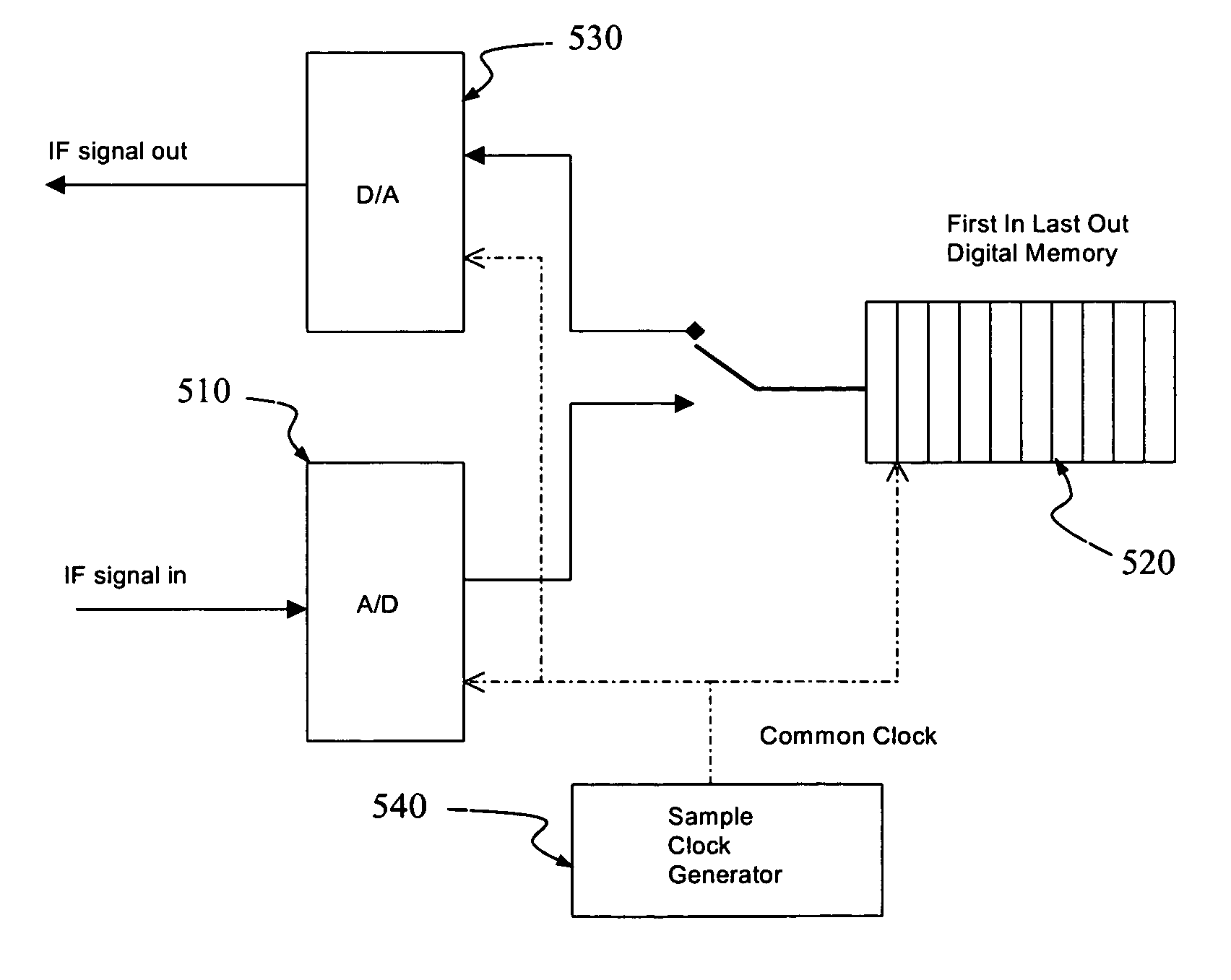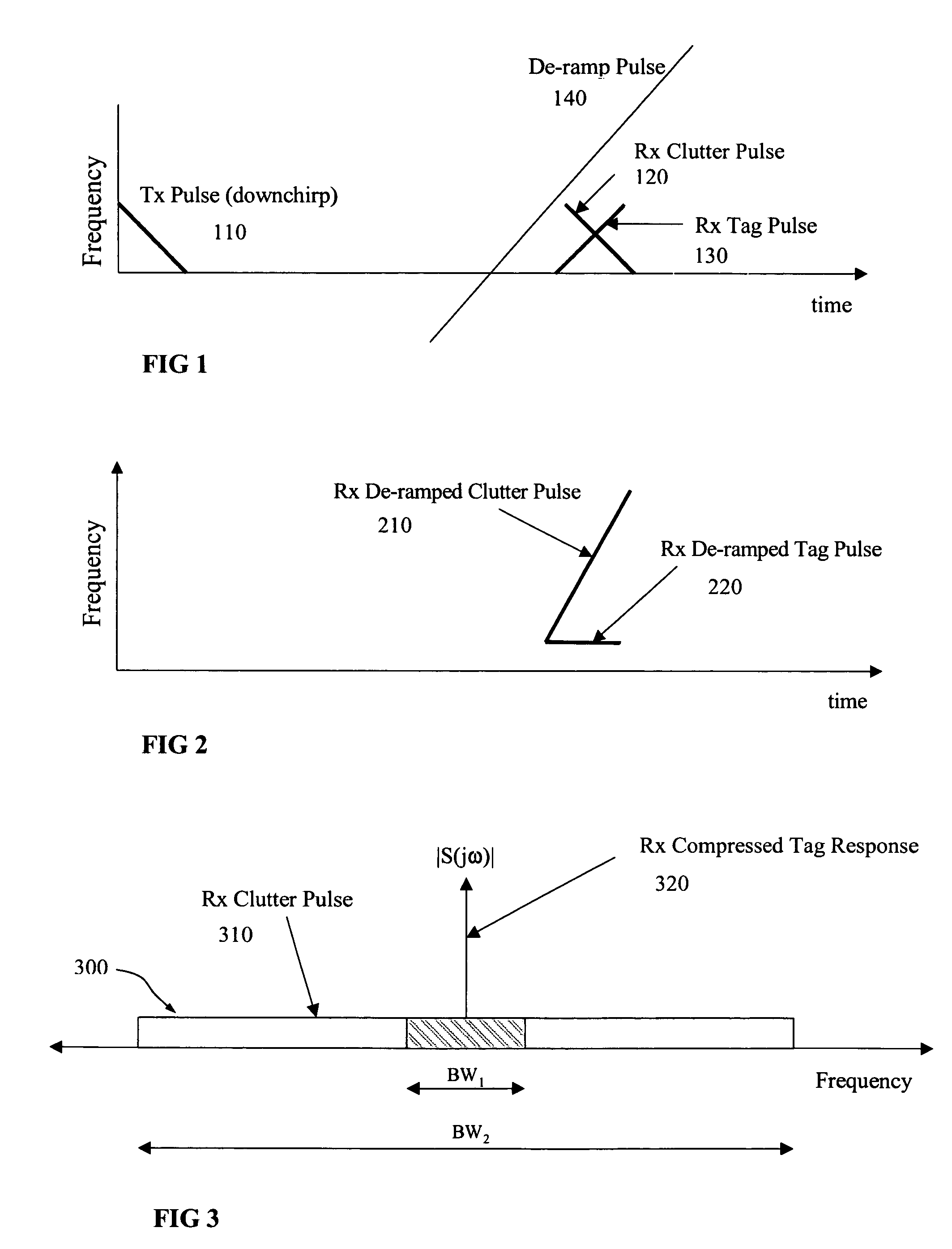Methods and system suppressing clutter in a gain-block, radar-responsive tag system
- Summary
- Abstract
- Description
- Claims
- Application Information
AI Technical Summary
Benefits of technology
Problems solved by technology
Method used
Image
Examples
Embodiment Construction
[0028] The new modulation disclosed herein is a specific form of intrapulse modulation—the internal characteristics of each separate echo pulse are modified by the tag. The modulation method of the original, aforementioned '830 patent only changed the electrical phase of each echo pulse by a constant amount. The method of the present invention modifies each tag echo pulse by reversing the direction of the linear frequency modulation originally imparted to the radar pulse by the radar prior to transmission of that same pulse. In order to correctly process the tag's echo, the radar processes the tag's echo using a reversed linear frequency ‘de-ramp’ reference pulse.
[0029] What is described in detail herein is a new method of obtaining clutter suppression with an in-band tag system. The present invention achieves approximately 15 dB of clutter suppression on each and every tag echo pulse returned to the radar. The Reverse-Chirp Algorithm that is herein presented applies to radars that...
PUM
 Login to View More
Login to View More Abstract
Description
Claims
Application Information
 Login to View More
Login to View More - R&D
- Intellectual Property
- Life Sciences
- Materials
- Tech Scout
- Unparalleled Data Quality
- Higher Quality Content
- 60% Fewer Hallucinations
Browse by: Latest US Patents, China's latest patents, Technical Efficacy Thesaurus, Application Domain, Technology Topic, Popular Technical Reports.
© 2025 PatSnap. All rights reserved.Legal|Privacy policy|Modern Slavery Act Transparency Statement|Sitemap|About US| Contact US: help@patsnap.com



